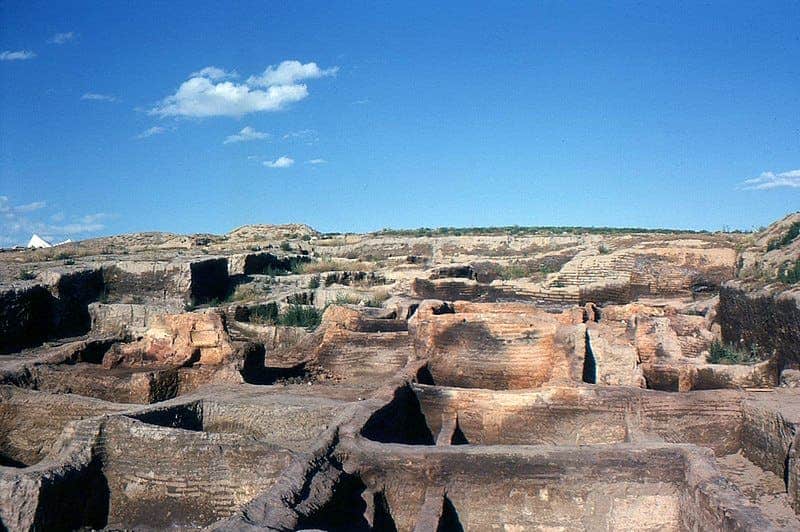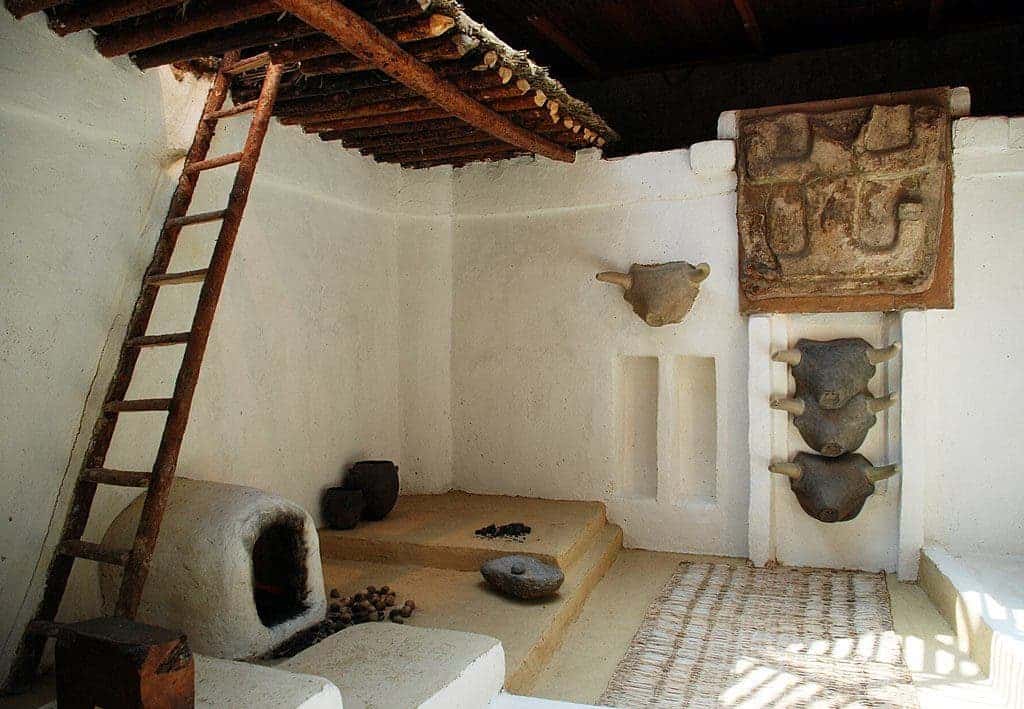Big city problems are not recent news — in fact, they’re about 9,000 years old, according to a new study.

Image credits Omar Hoftun / Wikimedia.
A new study finds that one of the world’s first large farming settlements experienced many of the hazards of modern urban life — overcrowding, infectious diseases, exposure to violence and environmental problems — almost ten millennia ago.
New dog, old tricks
“Çatalhöyük was one of the first proto-urban communities in the world and the residents experienced what happens when you put many people together in a small area for an extended time,” says aid Clark Spencer Larsen, lead author of the study, and Professor of Anthropology at The Ohio State University. “It set the stage for where we are today and the challenges we face in urban living.”
Çatalhöyük in modern-day Turkey is one of the earliest-known large farming settlements in the world. It was a sprawling, populous place inhabited from about 7100 to 5950 B.C. At its peak, Çatalhöyük housed anywhere between 3,500 to 8,000 people. Because it lacks some of the key traits of cities today, however, we call it a ‘proto-city‘ — but don’t let the moniker fool you. An international team of bioarchaeologists reports in a new paper: life in Çatalhöyük was rife with the same perils we’re exposed to in New York or London today.
The findings, which were drawn from 5 years of study of human remains unearthed at the site, show what people from a nomadic hunter-gatherer lifestyle were up against as they transitioned to a sedentary, agricultural life. As part of the larger Çatalhöyük Research Project, directed by Ian Hodder of Stanford University, Larsen first began studying human remains from the site in 2004. Fieldwork at Çatalhöyük ended in 2017 and the paper represents the culmination of the bioarchaeology work at the site, Larsen said.
The ruins of Çatalhöyük were first excavated in 1958, and today the site measures around 13 hectares (about 32 acres) with nearly 21 meters of deposits spanning 1,150 years of continuous occupation, according to the study. The city definitely had its ups and downs during the ages. It was a modest enough settlement in the Early period, a handful of mud-brick houses, but grew to a substantial size by its peak in the Middle period (6700-6500 B.C.). By the Late period, the population had declined sharply. Çatalhöyük was abandoned around 5950 B.C.
Farmville

Image via Wikimedia.
Farming was a pretty central part of life in Çatalhöyük. Based on stable carbon isotope analysis of the bones found at the site, the team determined that the residents relied heavily on wheat, barley, and rye for food, a diet they fleshed-out with wild plants. This grain-centric diet caused some locals to develop tooth decay, one of the so-called “diseases of civilization,” according to Larsen. Between 10% and 13% of all adult teeth retrieved at the site showed signs of dental cavities.
Stable nitrogen isotope ratios (nitrogen gets concentrated the further up a food chain you go, so it can be used to see which animals eat which) they also report that Çatalhöyükers primarily ate mutton, goat, and game as far as meats go. Cattle were also introduced to the area during the Later period, but sheep remained the primary source of meat for locals here.
“They were farming and keeping animals as soon as they set up the community, but they were intensifying their efforts as the population expanded,” Larsen said.
Residents also saw high infection rates. Up to one-third of remains from the Early period show evidence of infections on their bones. Pathogens thrived here due to crowding and poor hygiene. The team explains that during the settlement’s peak, houses were built like apartments, with no space between them so that residents came and left through ladders to the roofs of the houses. Excavations showed that interior walls and floors were re-plastered many times with clay. And while the residents kept their floors mostly debris-free, analysis of house walls and floors showed traces of animal and human fecal matter.
“They are living in very crowded conditions, with trash pits and animal pens right next to some of their homes. So there is a whole host of sanitation issues that could contribute to the spread of infectious diseases,” Larsen said.
Crowdedness may have also helped spark violence between locals, the team adds. Out of a sample of 93 skulls the team examined, 25 showed signs of healed fractures. Out of the same sample, 12 showed signs of repeated injuries (between 2 and 5).
Based on the shape of the lesions, they were produced by blows to the head made with hard, round objects. Clay balls with matching size and shape were found at the site. Most injuries were found on the top or back of the heads, suggesting the attacks came from the back (such as would happen during a mugging). Over half the victims were women (13 women to 10 men). The team also found evidence that such injuries were most common during the Middle period, “when the population was largest and most dense,” according to Larsen. “An argument could be made that overcrowding led to elevated stress and conflict within the community,” he adds.
The study also offers some clues as to why Çatalhöyük was abandoned. The authors report finding changes in the shape of leg bone cross-sections of locals over the generations which are indicative of walking long distances. Locals in the proto-city’s Late period had to walk around significantly more than their earlier counterparts, likely for farming and grazing. This finding suggests that drier climate conditions had a key role to play in Çatalhöyük’s demise, Larsen explains.
“We believe that environmental degradation and climate change forced community members to move further away from the settlement to farm and to find supplies like firewood,” he added. “That contributed to the ultimate demise of Çatalhöyük.”
Another surprising finding came from the way the locals were inhumed in Çatalhöyük. Most people were buried in pits dug into the floor of houses, likely under the home where they lived. This showed that most members of a household weren’t biologically related at all.
“The morphology of teeth are highly genetically controlled,” Larsen said. “People who are related show similar variations in the crowns of their teeth and we didn’t find that in people buried in the same houses. It is still kind of a mystery.”
“We can learn about the immediate origins of our lives today, how we are organized into communities. Many of the challenges we have today are the same ones they had in Çatalhöyük—only magnified.”
The paper “Bioarchaeology of Neolithic Çatalhöyük reveals fundamental transitions in health, mobility, and lifestyle in early farmers,” has been published in the journal PNAS.



